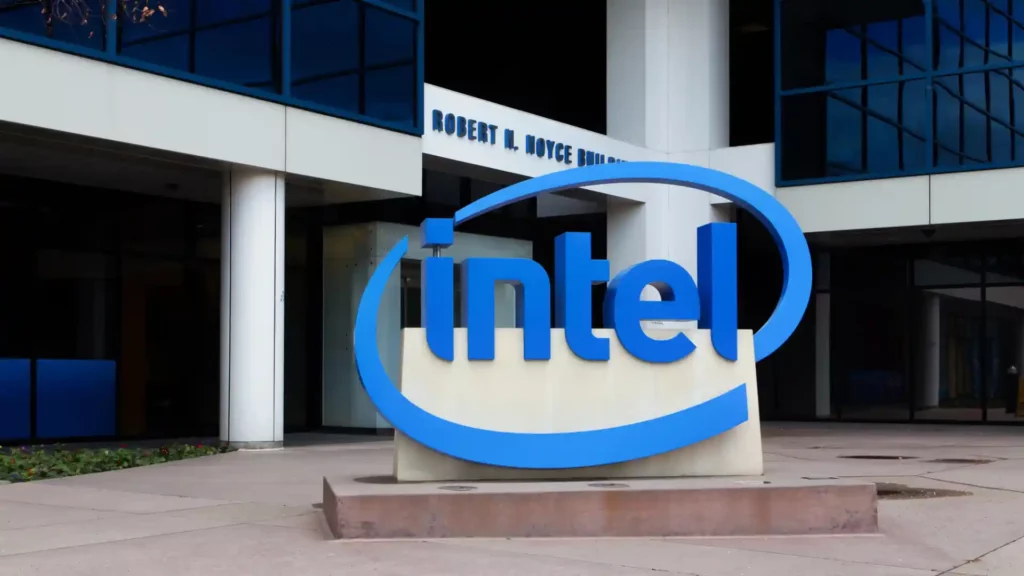Intel’s spending spree would cover its five-year plan of expansion and the most significant part of its expansion is transforming the empty fields in Colombus
Intel is reportedly planning a spending spree worth $100 billion across four states in the United States, in an effort to build and secure factories after the firm secured $19.5 billion in grants and loans by the government. The American MNC seeks to get another $25 billion in tax breaks.
Expanding factories across the US
Intel’s spending spree would cover its five-year plan of expansion and the most significant part of its expansion is transforming the empty fields in Colombus, Ohio into “the largest AI chip manufacturing site in the world” according to the CEO Pat Gelsinger. The functioning of the manufacturing site is expected to happen as soon as 2027. On Wednesday, the government announced the federal funds for intel under the CHIPS Act.
The company’s plan will also include redoing its sites in Oregon and New Mexico along with expanding the operations in Arizona. Taiwan Semiconductor Manufacturing Co is also setting up its massive factory in Arizona. TSMC also hopes to receive funding from the government as President Joe Biden is trying to bring advanced semiconductor manufacturing back to the United States.
Pat Gelsinger also mentioned that 30% of the $100 billion will be used on construction costs covering from labour to raw materials. The rest of the fund will be used for buying chip-making tools from Tokyo Electron, ASML, KLA, and Applied Materials. The funds would help Intel in broadening its future plans, along with expanding the government’s goal of ramping up semiconductor manufacturing in the country.
Intel was one of the top players in the semiconductor industry for several decades, selling them at the best price, reaping profits, and using the profits to do more research to keep maintaining its position in the industry.
During the 2010s, Intel lost its position to TSMC, its profit margins slumped, and the firm even had to cut its costs to keep the market shares with lesser-known products. Pat Gelsinger announced his plans to bring back Intel to the top position in 2021 but mentioned that he would require the government’s assistance. Now with the funds allotted, Intel could strategize its growth to make the company profitable.
The financial assistance will help the Ohio site function by 2027 or 2028, but the time could vary if there are any deep fluctuations in the chip market, Gelsinger warned. Despite the grants and loans, the company plans to make most of its purchases through existing cash flows.
“It will still take three to five years for Intel to become a serious player in the foundry market” Kinngai Chan, Summit analyst said. He also warned that more investment would be required for Intel to overtake TSMC, adding that TSMC could remain the leader for some more years.
Echoing his earlier remarks on Tuesday, Gelsinger stated that further U.S. financing for semiconductor plants will probably be required to restore the country’s position as a global leader in the industry.
“It took us three-plus decades to lose this industry. It’s not going to come back in three to five years of CHIPS Act” funding, Gelsinger said.
Nevertheless, Ben Bajarin, CEO of research firm Creative Strategies, stated that Intel must sooner rather than later demonstrate that it can compete with its Korean and Taiwanese rivals even with government support.
“It will be important to know how much longer ‘smart capital’ is needed for Intel before they can stand on their own,” said Bajarin.
Jimmy Goodrich, semiconductor export and technology adviser to the RAND Corp mentioned that Intel would be the priority for the country even though rival firms are being built in the US.
“Only Intel has the workforce, technology, and supply chain that is largely US-centric. So, while what TSMC and Samsung are doing here is important and should be welcomed, it’s also important to have a strong home team,” said Jimmy Goodrich.
